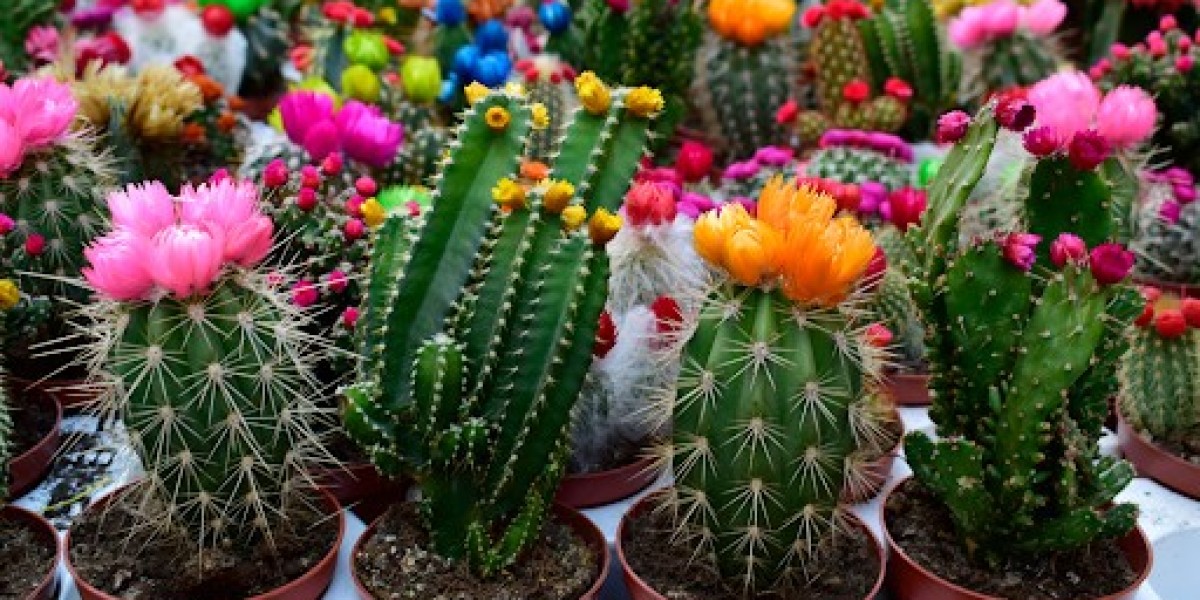With their striking appearance and incredible adaptability, Cacti plants have captured the hearts of plant enthusiasts and collectors worldwide. These unique succulents, known for their distinctive features and impressive resilience, have a rich history and diversity, making them a fascinating subject of study. In this article, we'll delve into the intriguing world of cacti plants, exploring their evolution, diversity, and cultural significance.
Evolutionary Marvels
Cacti, belonging to the family Cactaceae, have a remarkable evolutionary history dating back millions of years. Their ancestors likely originated in South America and later spread to other parts of the world, adapting to a wide range of climates and landscapes. Cacti are often associated with arid deserts but can also be found in tropical rainforests, coastal regions, and high mountainous areas.
One of the most distinguishing features of cacti is their adaptation to water scarcity. They have evolved specialised structures like thick, fleshy stems and reduced leaves to minimise water loss through transpiration. These adaptations have enabled them to thrive in some of the harshest environments on Earth.
Diversity in Form and Size
Cacti exhibit an astonishing diversity in form and size. From the towering saguaro cactus (Carnegiea gigantea) that can reach heights of up to 60 feet to the tiny, globular mammillaria species that fit in the palm of your hand, there's a cactus for every preference. The variations in shape, colour, and spination have made cacti an attractive choice for collectors and landscapers alike.
Some cacti are highly ornamental, like the Echinocactus grusonii, also known as the Golden Barrel Cactus, which features a beautiful golden colour and a symmetrical, barrel-like shape. Others, like the Opuntia genus, commonly known as prickly pears, are valued for their culinary uses, with their edible and delicious fruits.
Cultural Significance
Cacti have played essential roles in the cultures and traditions of the regions they inhabit. Cacti hold cultural significance in Mexico dating back to ancient civilisations like the Aztecs and Mayans. The saguaro cactus symbolises the American Southwest and holds cultural significance for Native American tribes such as the Tohono O'odham people.
In addition to their cultural significance, cacti have practical uses as well. Some species have long been used as a source of water in desert regions, where travellers and indigenous peoples would tap into the cactus's water-storing tissues for hydration. The spines of certain cacti have also been employed as tools and sewing needles by various cultures.
Remarkable Survival Strategies
Cacti's remarkable ability to survive in extreme conditions has made them a subject of scientific fascination. Their unique photosynthetic adaptations, such as nocturnal carbon fixation, help them conserve water and thrive in hot, dry environments. Some cacti species have even developed a specialised mechanism to extract water vapour from the air, allowing them to survive in arid conditions with minimal rainfall.
Furthermore, cacti have devised various strategies to deter herbivores and protect themselves from predation. Their sharp spines, often surrounded by clusters of glochids (tiny, hair-like spines), serve as effective deterrents against animals looking for a quick meal. Some cacti have evolved a symbiotic relationship with ants, which defend the cactus in exchange for shelter and food.
Conservation and Threats
Despite their remarkable adaptability, many cacti species are facing threats due to habitat destruction and illegal collection for the plant trade. The Convention on International Trade in Endangered Species of Wild Fauna and Flora (CITES) lists several cactus species as endangered or threatened, highlighting the need for conservation efforts.
Conservation organisations and botanical gardens around the world are working to protect these unique plants through seed banks, habitat restoration, and public education. Raising awareness about the importance of preserving cacti in their natural habitats is crucial to ensuring their survival for future generations. You can visit the site of “ The Jungle Collective” for the purchase of all plants like boronia, snake plant etc.
Conclusion
Cacti plants are more than just decorative houseplants; they are living testaments to nature's ability to adapt and thrive in diverse environments. Their evolutionary history, astonishing diversity, cultural significance, and survival strategies make them an endlessly fascinating subject of study.


